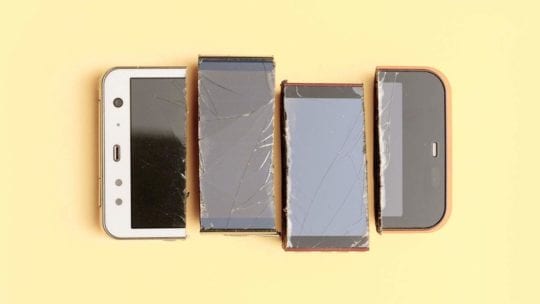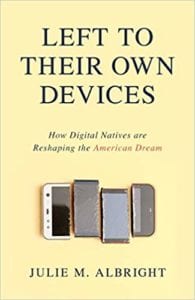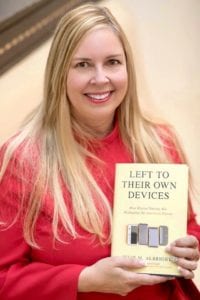
"How are businesses being impacted by a digital-first consumer and workforce?" asks Dr. Julie Albright, a sociologist specializing in digital culture and communications. "How do they need to change to adapt?"
These questions kick off her new book, "Left to Their Own Devices: How Digital Natives Are Reshaping the  American Dream," a fascinating look at the challenges of communicating in what she calls an "untethered society," an unhooking from traditional social structures in the pursuit of more digital connectivity.
American Dream," a fascinating look at the challenges of communicating in what she calls an "untethered society," an unhooking from traditional social structures in the pursuit of more digital connectivity.
Dr. Albright will join me in a fireside chat at PRNEWS' Digital PR Awards breakfast on October 18. We'll discuss her provocative research, what this shift away from old, "nuclear family" models of the American Dream means for communicators, and how we can adjust to these seismically shifting cultural behaviors.
Ahead of her appearance, Dr. Albright spoke with me about what our audience can take away from her work.
PRNEWS: You wrote this book for a more general audience, but you’ll have PR and marketing professionals in the room. What is in the book that they can bring back to their jobs?
Dr. Julie Albright: In this book, I see the constellation in the stars, so to speak, and am able to discern patterns. I started noticing studies coming out from many disparate fields that, put together, describe a pattern that I call “coming untethered.” This is the idea that young people are unhooking from things that generations prior did routinely—things like getting married or buying a home, buying a car, joining a political party or a church. These...things were taken for granted and led to consumer behavior, which was marketed, of course.
So at this point what we have is a seismic sea change of values and behaviors, where behaviors are increasingly orbiting around digital connectivity. If you’re not aware of these changes, and many people are not because they haven’t been put together in a consumable way… that’s what I’m trying to do with this book—elucidate the patterns so that people can understand these massive changes afoot and get ahead of where things are going in terms of consumer behavior, consumer desires and services that would be applicable to people who are increasingly single, mobile and digitally connected.
PRN: With this sea change and pattern of an untethered society, is there a need for PR pros and marketers to change their behaviors, their investments, their allocation of resources?

JA: The focus will certainly change. Much advertising over the years has focused on ‘the nuclear family.’ Just as an example, 65 percent of “the silent generation” were married between age 18-32. Now it’s only 25 percent. So if you’re targeting this mythical “nuclear family,” you may be missing the mark.
Same thing with television watching—the younger you are, the less likely you are to be watching traditional television. It depends, as always, upon the market you’re trying to reach. The idea of how you’re framing and marketing these goods and services to a young, increasingly single population is going to be very different.
PRN: You have this powerful quote in the book, “Interaction is not human to human anymore, but human to screen.” In some ways I feel like the digital marketer’s role in the 21st century is directly at odds with this change you've identified is coming. How can communicators reconcile that, and how can we encourage people to be more present while also protecting our bottom line? Where’s the middle ground there?
JA: That’s a great question. Here’s the thing—all marketing wants to stand out in a noisy world. Young people, in fact, people of many different age groups, are starting to realize they are spending too much time on their screen and that it’s not necessarily healthy. Can marketers create experiences that are memorable, where people can reconnect again?
Instead of being tethered and reconnecting through a screen, which is ultimately unsatisfying and driving loneliness, anxiety and depression among young people, can marketers create meaningful moments where people can actually connect again? It can be around a brand, but there’s a real hunger for this connection, and that’s where the opportunity is right now—to create those moments.
PRN: Insofar as experiential marketing has become a billion-dollar cottage industry, there have been tons of experiences at events like music festivals, or pop-ups, that create a real IRL moment but still end with a digital email capture, a digital footprint, or some sharable piece of leadgen that takes the experience online. I wonder if that extra digital element at the end profanes the offline experience at all.
JA: It’s a valid question. Obviously, you want to keep the relationship going, and that’s probably the best way to do it. I would say, think of incorporating the senses again into marketing experiences. For example, if you think about being online, many of the senses of the body are stripped away. We can see or hear things, but the full tactility of smell and touch? These things are pleasurable to people. So many young people are living a life that’s a very narrow strip of what’s possible. It’s really going to take marketers thinking outside the box.
As you’ve said, there are a lot of pop-ups, but the ones I see are all about taking selfies here or there. It’s almost playing into the wave instead of playing against it to create something truly new and memorable.
